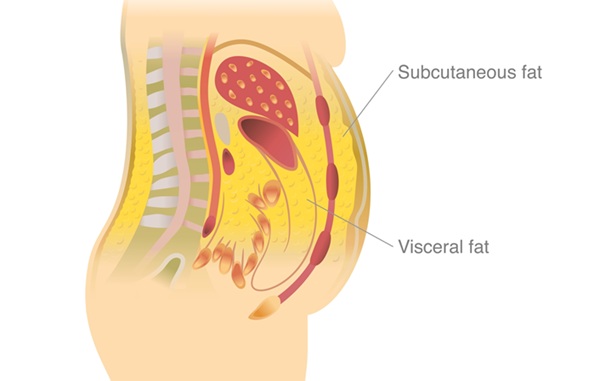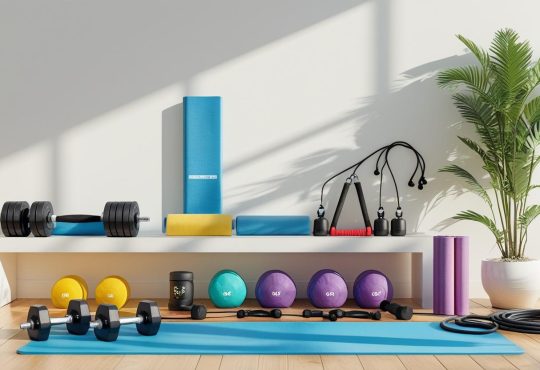Do you dream of losing that stubborn belly fat but dread the idea of spending hours in a gym? You’re not alone—and guess what? You don’t need fancy equipment, personal trainers, or an expensive membership to see real results. By making simple changes to how you move and what you eat every single day, you can shrink your waistline naturally and sustainably. This article will guide you through how to lose belly fat using only daily activities you already do—or can start doing right now.
Say goodbye to intimidating workouts and hello to a feel-good routine that fits your life. We’ll explore practical tips like boosting your walking habits, optimizing your meals, supporting your metabolism, and keeping your mood and energy high. All of this is based on real science and easy-to-follow steps, so you can confidently begin your journey to a healthier, flatter belly—right from the comfort of your everyday world.
1. Understanding Belly Fat and Why It Matters
1.1 What is Belly Fat?
Belly fat isn’t just one type of fat—it comes in two main forms that affect your body in very different ways.
-
Subcutaneous fat is the soft, pinchable fat located just under the skin. It’s the kind you notice when your clothes feel tighter around the waist. While it may affect your appearance, it’s generally less harmful to your health.

-
Visceral fat, on the other hand, is the fat stored deep inside your abdomen, surrounding vital organs like the liver, stomach, and intestines. Unlike subcutaneous fat, you can’t always see or feel visceral fat, but it’s much more dangerous. High levels of visceral fat are strongly linked to serious health conditions such as heart disease, type 2 diabetes, high blood pressure, fatty liver disease, and certain cancers.

What makes visceral fat especially risky is that it’s metabolically active—it releases hormones and inflammatory substances that can negatively affect your body’s normal function. Over time, this can lead to insulin resistance, increased cholesterol, and chronic inflammation.
1.2 Why Losing Belly Fat Helps
Reducing belly fat, especially the visceral kind, offers more than just cosmetic benefits. When you lose fat around your midsection, you’re also lowering your risk of developing life-altering diseases. Studies have shown that trimming your waistline improves heart function, reduces blood pressure, and enhances insulin sensitivity—even if your overall weight doesn’t change drastically.
In fact, just a modest reduction in abdominal fat can lead to noticeable improvements in health markers. For example, a 5% to 10% drop in total body fat can reduce visceral fat significantly and improve organ health. A flatter belly also means less strain on your joints, better mobility, and improved breathing.
Bottom line: Dropping belly fat isn’t just about looking better—it’s about feeling better, living longer, and protecting your long-term health from the inside out.
2. Daily Movement: Your Secret Weapon
2.1 Walking—Your Super Activity
Walking is one of the simplest and most underrated ways to lose belly fat naturally. It doesn’t require any equipment, special training, or fancy workout clothes—just your feet and a bit of time. Brisk walking can burn over 150 calories in 30 minutes, and more importantly, it helps reduce visceral fat—the dangerous fat that builds around your organs.
What makes walking so effective is that it’s easy to stay consistent with. Unlike intense workouts that might leave you sore or tired, walking feels manageable and even enjoyable.
Tips to get started:
-
Aim for 30 minutes a day, five to six days a week. This is the sweet spot recommended by health experts for both fat loss and heart health.
-
Break it up: Can’t find 30 minutes at once? Try two 15-minute walks or three 10-minute sessions spread throughout your day.
-
Slow and steady really works: A long-term study found that postmenopausal women who walked at a steady pace (about 5.5 km/h or 3.4 mph) for 30 weeks reduced more belly fat than those who walked faster for less time. Why? Longer walks burn more fat as fuel, especially if you’re not overexerting yourself.
-
Track your steps: Using a basic pedometer or smartphone step counter can help you stay motivated. Aiming for 7,000–10,000 steps a day is a good goal.
If you’re looking for a starting point, try walking after meals—it helps with digestion, improves blood sugar levels, and contributes to your daily calorie burn.
2.2 Non-Exercise Activity Thermogenesis (NEAT)
NEAT stands for Non-Exercise Activity Thermogenesis, which is just a fancy way of saying “all the calories you burn through daily activities that aren’t formal workouts.” These include everything from fidgeting to cooking, cleaning, walking to the store, or standing while you work.
Believe it or not, NEAT can burn hundreds of extra calories per day—sometimes more than a gym session—especially if you stay consistently active throughout your day. The key is to move more and sit less, no matter how small the movement may seem.
Everyday NEAT ideas:
-
Stand or pace during phone calls instead of sitting
-
Park farther away at the store or work
-
Always take the stairs—even just one floor makes a difference
-
Stretch or march in place during TV commercials or between tasks
-
Turn chores into workouts: Vacuuming, scrubbing floors, gardening, and carrying groceries all count as functional fat-burning activity
These mini movements not only help burn fat, but also reduce stiffness, boost energy, and improve your posture and mood throughout the day.
2.3 Mix in Natural Cardio
If walking and NEAT are your foundation, natural cardio is the secret sauce that spices things up. These are everyday tasks that get your heart rate up a little higher for short periods—without you even noticing it’s “exercise.”
Boost fat-burning with activities like:
-
Gardening: Digging, raking, weeding—great for arms, legs, and core
-
House cleaning: Mopping, sweeping, and scrubbing get your body moving and sweating
-
Dancing around your house: Play upbeat music and dance for 10–15 minutes—fun and effective
-
Playing with kids or pets: Running around the yard or tossing a ball keeps you moving in playful ways
-
Post-meal walks: Just 10 minutes of walking after eating can improve digestion, regulate blood sugar, and help your body tap into stored fat
These types of natural cardio are perfect because they blend seamlessly into your day and don’t feel like a chore. When you move this way, you’re not just burning calories—you’re creating a healthy, active lifestyle that doesn’t depend on a gym.
3. Eat Smart But Not Less
Losing belly fat isn’t just about eating less—it’s about eating smarter. Crash diets and skipping meals can backfire by slowing your metabolism and making you feel tired and cranky. Instead, focus on nutrient-dense, whole foods that fuel your body, keep you full, and help you naturally cut calories without starving yourself. It’s not about restriction—it’s about smart choices and steady progress.
3.1 Create a Calorie Deficit
To lose fat, your body needs to burn more calories than it consumes—this is called a calorie deficit. But you don’t have to go to extremes. A simple way to do this is to reduce your daily calorie intake by around 500 calories. That usually leads to losing about 0.5 kg (or 1 lb) per week, which is a healthy, sustainable pace.
Here’s how to do it without feeling hungry all the time:
-
Swap high-calorie foods (like fried snacks or sugary drinks) for lighter, more filling options (like fruits, veggies, or lean protein).
-
Use smaller plates to naturally reduce portion sizes.
-
Avoid liquid calories—they sneak up fast and don’t fill you up.
You don’t need to count every calorie—just be mindful of what and how much you’re eating, and aim for slow, steady changes.
3.2 Focus on Nutrient-Dense Foods
When it comes to how to lose belly fat, what you eat matters just as much as how much. Focus on nutrient-dense foods that provide more nutrition per calorie, helping you stay satisfied and energized.
Here’s what to include more often:
-
Lean protein (like eggs, chicken, tofu, Greek yogurt): Protein keeps you full longer, helps maintain muscle while you lose fat, and boosts your metabolism. Aim for a protein source in every meal.
-
Soluble fiber (like oats, chia seeds, apples, beans): This type of fiber forms a gel-like consistency in your stomach, slowing digestion and keeping you full. It’s especially good at targeting belly fat over time.
-
Complex carbs (like brown rice, sweet potatoes, quinoa): These provide energy and don’t spike blood sugar like refined carbs.
-
❌ Cut back on simple sugars & white carbs (white bread, pastries, soda): These cause blood sugar spikes, which lead to fat storage—especially around your belly.
-
Healthy fats (like olive oil, nuts, seeds, avocado): These help you feel satisfied and support fat-burning hormones when eaten in moderation.
The goal is to fill your plate with foods that make you feel good—not just full, but energized, focused, and satisfied.
3.3 Skip Trans Fats & Watch Alcohol
Not all fats are created equal. While healthy fats are your friend, trans fats are the enemy when it comes to belly fat. These artificial fats are often found in processed snacks, baked goods, margarine, and fried fast food.
Why avoid trans fats?
They can increase bad cholesterol, cause inflammation, and encourage fat storage around your midsection—even if you’re not overeating. Always check food labels for the words “partially hydrogenated oils”—that’s code for trans fats.
And don’t forget alcohol.
-
Alcohol—especially beer and sugary cocktails—packs on empty calories. Even moderate drinking has been linked to increased belly fat, particularly in men.
-
If you do drink, stick to low-sugar options and limit to 1–2 drinks per week to stay on track.
These small changes—ditching trans fats and drinking less—can lead to major results over time, especially for your waistline.
3.4 Eat Whole Foods
Here’s a simple rule: the fewer ingredients on the label, the better. Whole foods are foods that are close to their natural state—nothing too processed, packaged, or fake.
Why Whole Foods helps:
-
They’re full of vitamins, fiber, water, and nutrients that keep your body running well.
-
They’re more filling and harder to overeat than highly processed junk.
-
They help balance blood sugar, reduce cravings, and support your metabolism.
✅ Stock up on:
-
Fresh vegetables and fruits
-
Whole grains like oats, brown rice, and quinoa
-
Lean meats, eggs, and legumes
-
Healthy fats like nuts, seeds, and olive oil
❌ Steer clear of:
-
Sugary drinks (soda, sweetened teas, energy drinks)
-
Packaged snacks (chips, candy, instant noodles)
-
Fast food and deep-fried items
A fridge full of real, whole foods means you’ll naturally eat better without needing to count every bite. And remember: food is fuel. The better the fuel, the better your body burns fat—including the belly kind.
4. Use Natural Daily Moves as Mini Workouts
You don’t need a gym membership, dumbbells, or a workout app to get moving. Your daily routine is full of opportunities to exercise, burn calories, and support belly fat loss—without it even feeling like a workout. The trick is to sneak in small bursts of bodyweight movement, light cardio, and stretching throughout your day. These mini workouts are especially powerful because they build consistency, which is the real key to long-term fat loss.
4.1 Gentle Bodyweight Exercises
You don’t need to break a sweat or follow a long routine. Just a few gentle, low-impact moves done regularly can help tone muscles, increase your metabolism, and support your fat-loss goals—especially around your midsection. These simple exercises can be done anywhere at home—in your bedroom, kitchen, or even while watching TV.
Here are 5 easy moves to try each day:
-
Wall Sit (2 x 30 seconds): Lean your back against a wall, slide down until your knees are at 90 degrees, and hold. Great for your thighs and core.
-
Chair Squats (2 x 10 reps): Stand in front of a chair, lower yourself like you’re about to sit, then rise back up. Strengthens your legs and glutes without strain.
-
Standing Calf Raises (2 x 15 reps): Stand tall, rise onto your toes, hold for a second, and lower back down. Helps tone your lower legs and improves balance.
-
Counter Push-Ups (2 x 10 reps): Place your hands on the kitchen counter, step back slightly, and do push-ups at an incline. Easier than floor push-ups, but still effective for your arms and chest.
-
Marching in Place (2 minutes): Lift your knees high, swing your arms, and keep a steady rhythm. It’s simple cardio that you can do during a TV break.
Do this set once or twice a day, and you’ll naturally build strength and burn more calories over time—no equipment, no stress.
4.2 Add DIY Intervals
If you’re wondering how to make your normal activities burn more belly fat, the answer is: intervals. Adding short bursts of faster movement to your daily tasks can mimic the benefits of High-Intensity Interval Training (HIIT)—but in a much gentler, sweat-free way.
Here’s how to do it:
-
During a walk or while cleaning, try this simple pattern:
1 minute at a brisk or fast pace, followed by 2 minutes at a slower, relaxed pace. -
Repeat that cycle 4 to 6 times.
For example, while vacuuming or sweeping, move quickly and with purpose for a minute, then return to a slower, comfortable pace. When walking outside or even pacing inside your home, speed up for a minute, then slow down. These brief spikes in effort elevate your heart rate and boost fat-burning, especially around the belly, without needing intense workouts.
You’re essentially turning everyday movements into natural cardio sessions, and over time, they really add up.
4.3 Stretch & Move Throughout the Day
Even if you’re doing walks and workouts, sitting for long stretches can still slow your metabolism and reduce the fat-burning benefits of your activity. That’s why frequent movement breaks are just as important as exercise.
Simple ways to stay active during the day:
-
Set a reminder to stand up every hour. Even just a couple of minutes of light movement can re-activate your muscles and improve circulation.
-
Do a quick stretch, walk around the room, or even a few steps in place.
-
During work calls or while waiting for food to cook, try shoulder rolls, neck stretches, or leg swings.
-
Get in the habit of taking the long way around the house when grabbing something—it’s a tiny change that adds up over time.
These mini moves help prevent stiffness, fight off fatigue, and keep your metabolism running smoothly. It’s also a great mental reset during busy or stressful days.
5. Rest, Recovery & Stress—Key Underdogs
When people talk about how to lose belly fat, they often focus only on diet and exercise. But there’s a secret trio that’s just as important—sleep, stress, and hydration. These often-overlooked areas play a huge role in how your body stores fat, especially around your midsection. If you’re doing everything right but still struggling to see results, improving rest and recovery could be the missing piece.
Let’s break down how each one helps flatten your belly and boost your overall well-being.
5.1 Prioritize Sleep
Sleep isn’t just about feeling rested—it’s about regulating hormones that control your hunger, fat storage, and energy. When you don’t get enough quality sleep, your body produces more ghrelin (the hunger hormone) and less leptin (the fullness hormone), making you feel hungrier and more likely to overeat.
Research shows that adults who sleep less than 5 hours a night tend to gain more visceral fat than those who sleep 7–8 hours consistently. Even just a few nights of poor sleep can increase cravings for high-sugar, high-fat foods and slow down your metabolism.
Tips for better sleep:
-
Stick to a regular bedtime—even on weekends
-
Turn off screens at least 30 minutes before sleeping
-
Keep your room dark, cool, and quiet
-
Avoid caffeine and heavy meals before bed
Getting better sleep helps your body reset, repair, and get into fat-burning mode—naturally.
5.2 Reduce Stress
Chronic stress doesn’t just affect your mood—it also encourages your body to store fat, especially in your belly. That’s because stress raises levels of cortisol, a hormone that triggers cravings for comfort food and tells your body to hold on to fat.
While you can’t eliminate stress (life happens!), you can control how you respond to it. Practicing daily stress-reducing activities can lower cortisol and help your body stop storing fat unnecessarily.
Simple stress-busters to try:
-
Deep breathing exercises: Just 2–3 minutes of slow, deep breaths can calm your nervous system
-
Stretching or short walks: Even 5 minutes of movement helps clear your head and lower stress
-
Meditation or mindfulness apps: Great for calming racing thoughts and improving focus
-
Listening to calming music: A powerful mood-lifter and mental relaxer
Over time, managing stress not only supports belly fat loss but also improves your heart health, sleep quality, and mood.
5.3 Stay Hydrated
Water is one of the simplest tools for losing belly fat—and it’s often overlooked. Being even slightly dehydrated can confuse your brain into thinking you’re hungry, leading to unnecessary snacking.
Drinking water throughout the day helps you:
-
Stay full between meals
-
Boost digestion and reduce bloating
-
Support your metabolism—your body burns a few extra calories processing cold water (a tiny but helpful bonus)
Hydration tips:
-
Aim for 6–8 glasses of water per day, more if you’re active or live in a warm climate
-
Start your day with a glass of water to wake up your metabolism
-
Keep a water bottle nearby as a visual reminder to sip
-
Add slices of lemon, cucumber, or berries for flavor if plain water bores you
Remember, drinking enough water can make you feel better, move better, and support every step of your fat-loss journey.
6. Busting Myths & Misconceptions
When you’re trying to figure out how to lose belly fat, it’s easy to get caught up in popular advice that sounds great but isn’t backed by real science. From flashy social media workouts to quick-fix diets, there’s a lot of noise out there. Let’s clear the air and tackle a few common myths that might be holding you back.
6.1 Spot Reduction Doesn’t Work
One of the biggest myths out there is the idea that you can “target” belly fat by doing specific exercises like planks, crunches, or sit-ups. While those exercises do strengthen the muscles under the fat, they won’t actually burn the fat on top of them.
Fat loss doesn’t happen in just one area—it happens across your whole body. When you create a calorie deficit through diet and movement, your body decides where to pull fat from based on genetics and other factors. So yes, doing core exercises is great for strength and posture—but if your goal is a flatter belly, it has to be paired with full-body movement and a smart eating plan.
Bottom line: You can’t spot reduce belly fat, but you can reduce overall fat—belly included—by combining healthy eating, daily activity, and consistent habits.
6.2 Exercise Isn’t a Magic Bully
Here’s the truth: you can’t out-exercise a bad diet. If you’re moving a lot but still consuming more calories than you burn—especially from sugar, processed snacks, or large portions—you’re not going to see the fat loss you expect.
Exercise is important, no doubt. It boosts your metabolism, builds muscle, improves mood, and supports long-term health. But on its own, exercise won’t undo overeating. To lose belly fat, you need to focus on the full picture:
-
Smart, portion-controlled meals
-
Nutrient-rich whole foods
-
Regular, natural movement
-
Proper sleep and stress management
Think of it this way: Exercise is a great partner, but it’s not the boss. You need your food habits working with your movement, not against it.
6.3 Intense Isn’t Always Better
Many people think they need to push themselves to the limit every day to lose belly fat—sprinting, lifting heavy, or doing high-intensity workouts until they’re drenched in sweat. But here’s the good news: you don’t have to go all out to get results.
Research shows that slower, consistent activities like walking—especially when done regularly and for longer durations—can be just as effective (and sometimes more sustainable) than intense workouts. One study even found that slow-paced walkers lost more belly fat over time than fast walkers, because they stuck with it longer and burned more fat for fuel.
The key is consistency. Choose activities that feel good, that fit your lifestyle, and that you can repeat day after day. Your comfort zone is a great place to build a healthy, fat-burning routine that sticks.
7. Building Real-Life Daily Routines
Knowing how to lose belly fat is one thing—but actually putting it into practice is another. That’s where building realistic daily routines comes in. These aren’t extreme lifestyle overhauls or rigid schedules. Instead, they’re small, sustainable habits that fit naturally into your day—so you don’t feel overwhelmed or burnt out. When done consistently, these simple actions can make a big impact on your waistline and overall health.
Here’s how to take the science and turn it into a real-life daily rhythm you can stick with:
7.1 Morning
Start your day in fat-burning mode. Your morning routine sets the tone for the rest of your day—so begin with choices that hydrate you, boost your metabolism, and get you moving.
- Drink 300–500 ml of water as soon as you wake up to rehydrate and kickstart digestion.
- Take a 10-minute walk after breakfast—this helps control blood sugar levels and activates your metabolism early.
- Have a protein- and fiber-rich breakfast like oatmeal with nuts and berries, or eggs with whole grain toast and avocado. This combo keeps you full, steady, and less likely to snack later.
7.2 Daytime
Keep your body moving during your “non-exercise” hours. These little bursts of activity add up and help prevent long periods of sitting—which slows down fat burning.
- Stand or walk during phone calls instead of sitting
- Take the stairs whenever you can—it’s a simple way to sneak in cardio and strengthen your legs
- Eat a balanced lunch with lean protein, lots of veggies, and a healthy carb like quinoa, brown rice, or sweet potato. This keeps energy up without the crash.
7.3 Afternoon Boost
Avoid that mid-afternoon slump with light activity that gets your body (and brain) going again.
Take a 5–10 minute NEAT break—you could do some gardening, dance to your favorite song, or go for a brisk walk
Optional: throw in a quick round of bodyweight moves like squats, counter push-ups, or marching in place. Even one set can boost blood flow and energy.
These short movement bursts keep your metabolism humming and stop fat-storing hormones from creeping in during low-energy hours.
7.4 Evening
End your day with digestion-friendly movement and light eating. Your body’s metabolism naturally slows down later in the day, so support it with simple, calming habits.
- Take a 20–30 minute walk after dinner—research shows post-meal walks help with digestion and blood sugar control, which both play a role in reducing belly fat.
- Eat light and finish meals at least 2 hours before bed. This gives your body time to digest and lowers the chances of late-night snacking, which often leads to extra belly fat over time.
7.5 Nighttime Wind‑Down
Quality sleep helps your body reset, recover, and burn fat more effectively. A calming night routine not only helps you fall asleep faster—it helps your hormones stay in balance too.
- Turn off screens at least 30–60 minutes before bed. Blue light from phones and TVs can mess with your sleep signals.
- Do something relaxing—like light stretching, meditating, or reading a book.
- Aim for 7–9 hours of restful sleep. Your body does a lot of repair and fat-burning during deep sleep, so don’t skip this part.
By building these small but meaningful habits into your daily routine, you’ll make it easier to stay active, eat well, sleep better, and keep stress low—all key ingredients in your belly fat-loss journey. The best part? These habits are flexible, manageable, and designed to work with your real life—not against it.
8. Track Progress & Stay Inspired
Knowing how to lose belly fat is important—but staying motivated along the way is what keeps the momentum going. Fat loss is a slow, steady journey, and it’s easy to lose motivation if you’re not seeing dramatic changes overnight. That’s why tracking progress in a smart, balanced way—and celebrating small victories—can make a huge difference.
Think of tracking not as pressure, but as proof of your efforts. It shows you what’s working, what needs adjusting, and just how far you’ve come.
8.1 Measure What Matters
The scale can be useful, but it shouldn’t be your only tool—or even your main one. Weight can fluctuate due to water retention, hormones, or even the time of day. Instead, focus on measuring the changes that really reflect belly fat loss.
Here’s what to do:
- Measure your waist circumference once a month. Wrap a tape measure around your belly at navel level (not too tight), and record the number. Over time, this will show your progress more accurately than the scale.
- Weigh yourself once a week—not daily. This gives a better average and avoids discouragement from daily shifts.
- Pay attention to how your clothes fit. If your pants feel looser around the waist or shirts sit more comfortably, you’re losing belly fat—even if the number on the scale stays the same.
8.2 Record Your Wins
Tracking your habits and results doesn’t have to be time-consuming. Just a few notes a day can keep you focused and feeling positive. Whether you use a notebook, a fitness app, or a sticky note on the fridge, recording your progress helps you stay connected to your goals.
Things you can track:
- Steps walked or general daily movement
- Calories eaten vs. calories burned (or just note healthy meals and snack choices)
- Sleep quality—hours slept, how rested you felt
- Mood shifts—feeling more energetic, confident, or less bloated?
Seeing this written down reinforces your consistency—and gives you a personal “win list” to look back on when motivation dips.
8.3 Adjust as You Go
Progress isn’t always a straight line. If you hit a plateau (where things stall out for a week or two), don’t panic—this is totally normal. Instead, tweak your routine slightly to shake things up.
Easy ways to adjust:
- Add a few extra minutes to your daily walk or natural movement bursts
- Swap in a new veggie or whole food you haven’t tried before
- Double-check your water intake—it may have slipped without you noticing
And most importantly: Celebrate your small wins. Whether it’s skipping dessert for a day, getting your steps in, or waking up feeling rested, those victories build long-term success.
Remember: Progress isn’t just about losing inches—it’s about gaining better habits, more energy, and stronger confidence. Tracking your journey helps you see how far you’ve come, even when results aren’t immediate. So keep going. You’re building a healthier you, one smart step at a time.
9. The Power of Consistency
If there’s one “secret” when it comes to how to lose belly fat, it’s this: consistency beats intensity—every time.
It’s not about having one perfect day of clean eating or doing a long, exhausting workout once a week. What truly works is showing up daily in small ways: choosing a home-cooked meal instead of fast food, taking the stairs instead of the elevator, walking instead of sitting. These micro-choices might not feel impressive in the moment—but over time, they stack up and lead to real, visible changes.
One study published in NPJ Digital Medicine found that people who developed and stuck to regular routines (including movement, meal timing, and sleep patterns) had slimmer waistlines than those who followed inconsistent habits—even if their total weekly activity was similar. That shows just how important rhythm is when trying to lose belly fat.
Why consistency wins:
-
Builds better habits without mental burnout
-
Reduces stress and injury risk by keeping activity light and natural
-
Keeps progress steady instead of up-and-down yo-yo cycles
So don’t worry about being perfect. Just focus on being consistent. One smart choice a day beats seven perfect ones crammed into the weekend.
10. When Things Get Tough
Let’s be real: no matter how motivated you are, some days will feel harder than others. Maybe your energy is low, cravings hit hard, or life just gets busy. That’s normal—and it doesn’t mean you’ve failed. It’s what you do next that matters.
Here’s how to stay on track when motivation fades:
Feeling slow or sluggish?
Slow down! Don’t push yourself to do something extreme. A gentle walk, light stretching, or marching in place still counts—and keeps you moving without stress.
- Consistent mild movement beats doing nothing at all.
Craving snacks or sweets?
It happens to everyone. Instead of diving into processed treats, reach for healthier swaps like:
-
A piece of fruit with nut butter
-
A small handful of mixed nuts
-
Greek yogurt
-
Sparkling water with lemon or berries (great for soda cravings!)
These options satisfy cravings while supporting your belly-fat loss goals.
Too busy to work out?
We’ve all been there. On hectic days, just do 5 minutes of movement. Walk around the house, do calf raises while brushing your teeth, or knock out a quick set of counter push-ups.
Something is always better than nothing—and helps you maintain momentum.
Feeling down or unmotivated?
Mood dips can derail even the best plans. Combat them with connection and fun movement:
-
Invite a friend for a short walk
-
Play your favorite upbeat song and dance it out
-
Do light stretching while watching TV
Movement boosts feel-good hormones like endorphins and serotonin, which naturally lift your mood and help your body manage fat-storing stress hormones.
Conclusion
Losing belly fat doesn’t require fancy tools, long workouts, or strict diets—you just need smart, natural choices woven into your daily life. By boosting your daily steps, leaning on whole foods, managing sleep and stress, and making little exercise swaps at home, you can shrink that midsection healthily and happily. The science backs it: slow, steady movement helps the body tap into belly fat; better food fuels your efforts; and consistent lifestyle habits create lasting results.
This all may not happen overnight—but week by week, habit by habit, you’ll feel fitter, more energetic, and healthier. Celebrate each win, even if it’s just fitting into your jeans more comfortably or walking without getting winded. Be patient, be kind to yourself, and keep going. Before long, this friendly, everyday approach will become second nature—and that belly fat? It won’t know what hit it.
References & Sources
-
Walking studies showing fat loss—slow vs fast walking, calorie burn PMC+1Woman & Home+1
-
Nutrition tips—fiber, protein, carb reduction, trans fats, alcohol HealthlineHopkins Medicine, Wikipedia, Wikipedia
-
Sleep and stress links to belly fat Rush University System for Health, Hopkins Medicine, Wikipedia
-
NEAT benefits Tom’s Guide, Wikipedia
-
Post-meal walking & digestion Howdy Health+3PMC+3The Times of India+3
-
Myth of spot reduction Wikipedia
For more details and the latest studies, check:
-
Harvard Health – Taking Aim at Belly Fat (January 2024)
-
Medical News Today – Walking for weight loss (May 2025)
URL references:
-
Harvard Health: https://www.health.harvard.edu/newsletter_article/taking-aim-at-belly-fat
-
Medical News Today: https://www.medicalnewstoday.com/articles/325809





